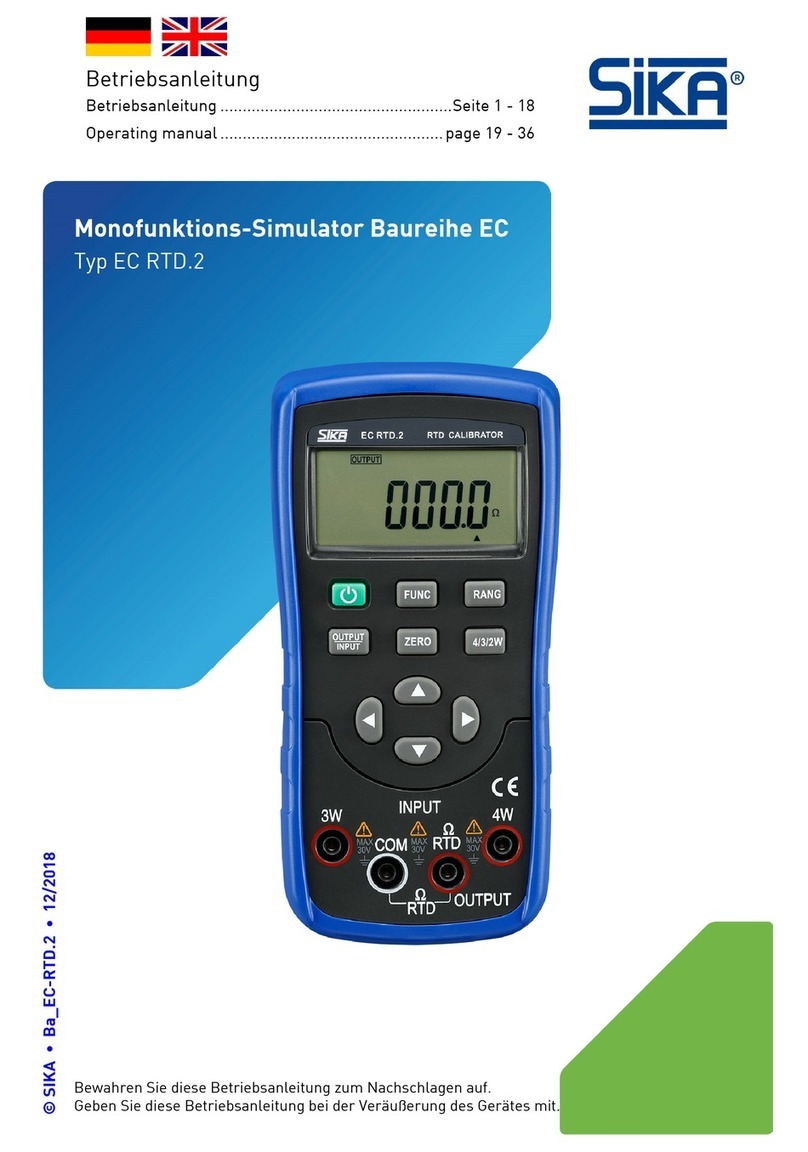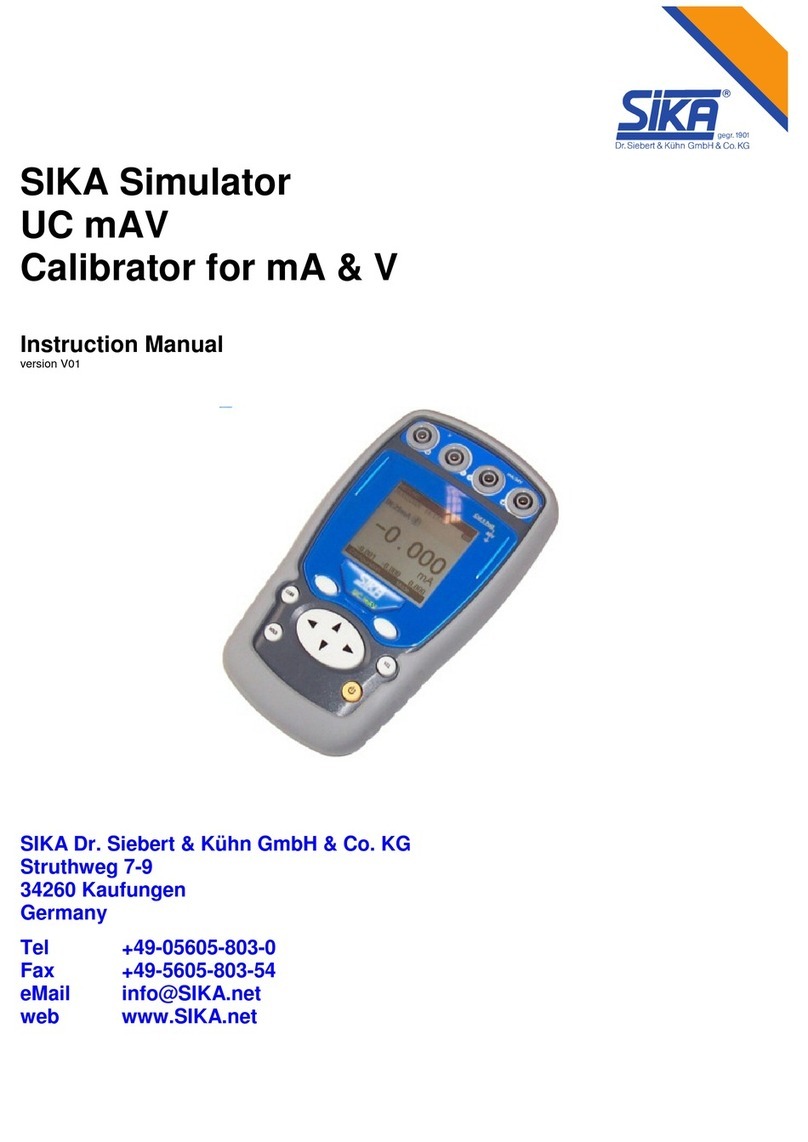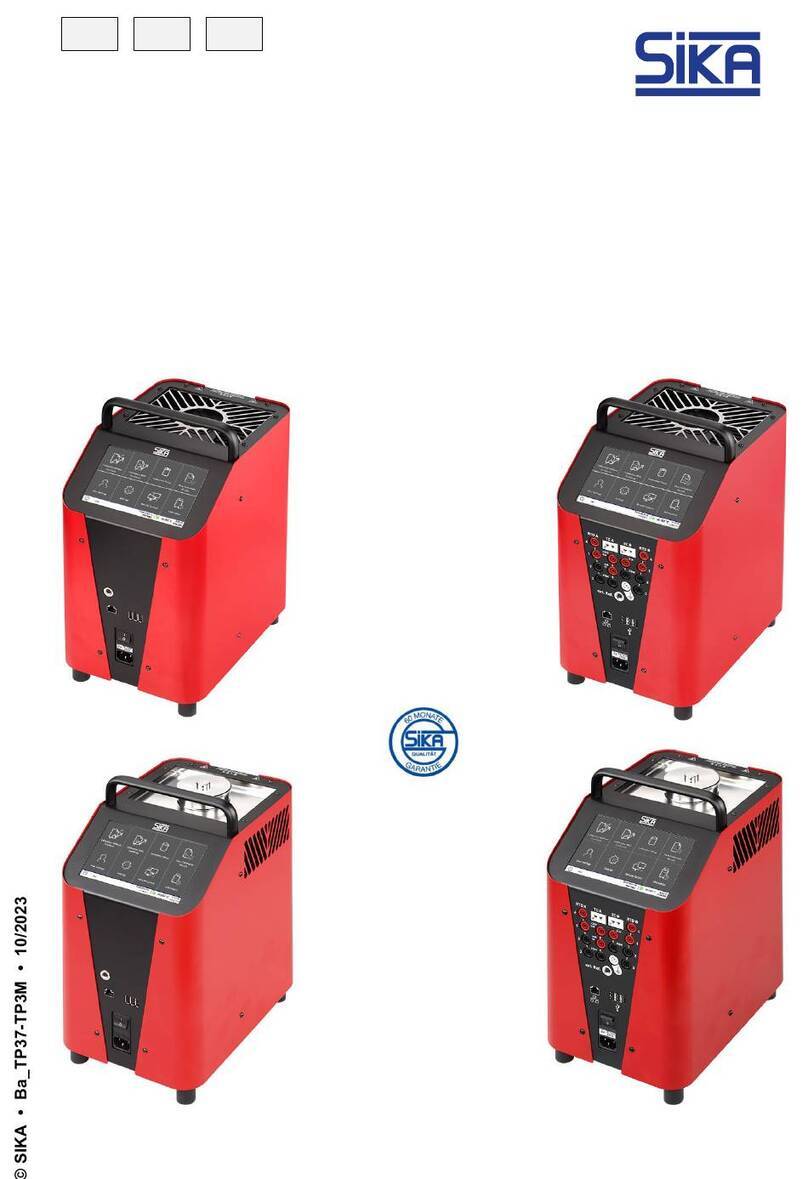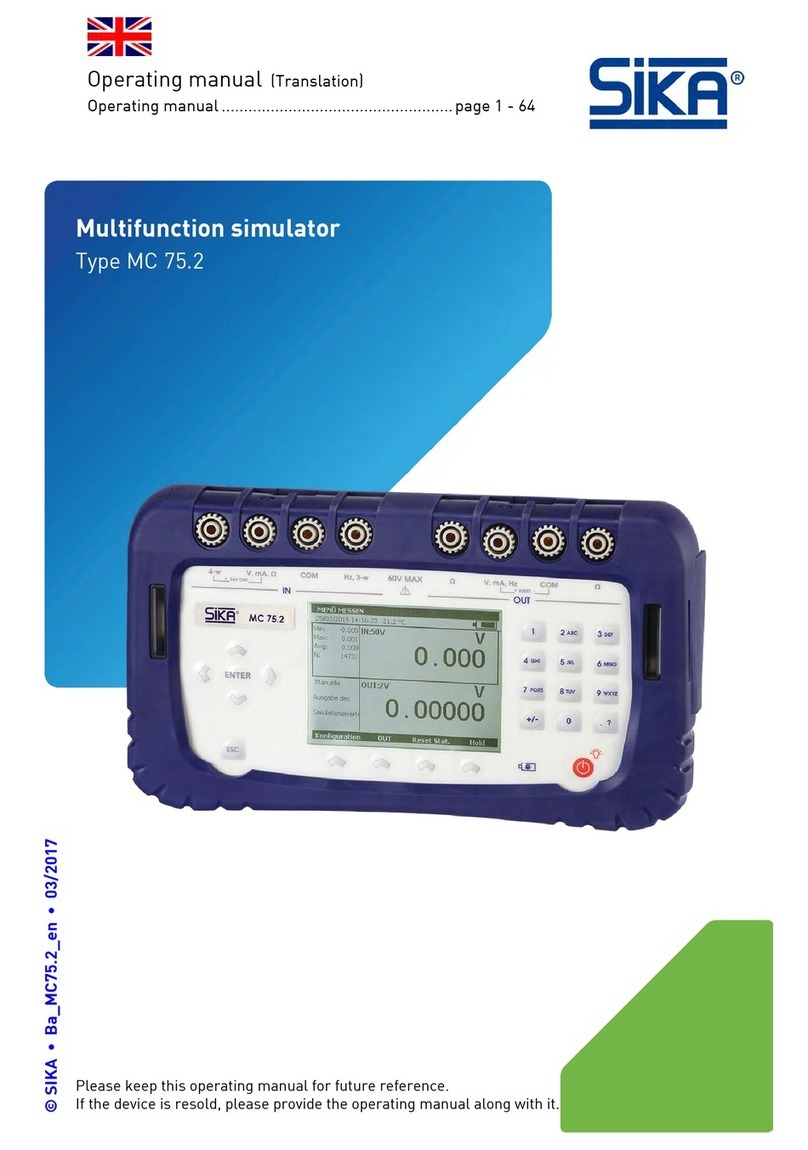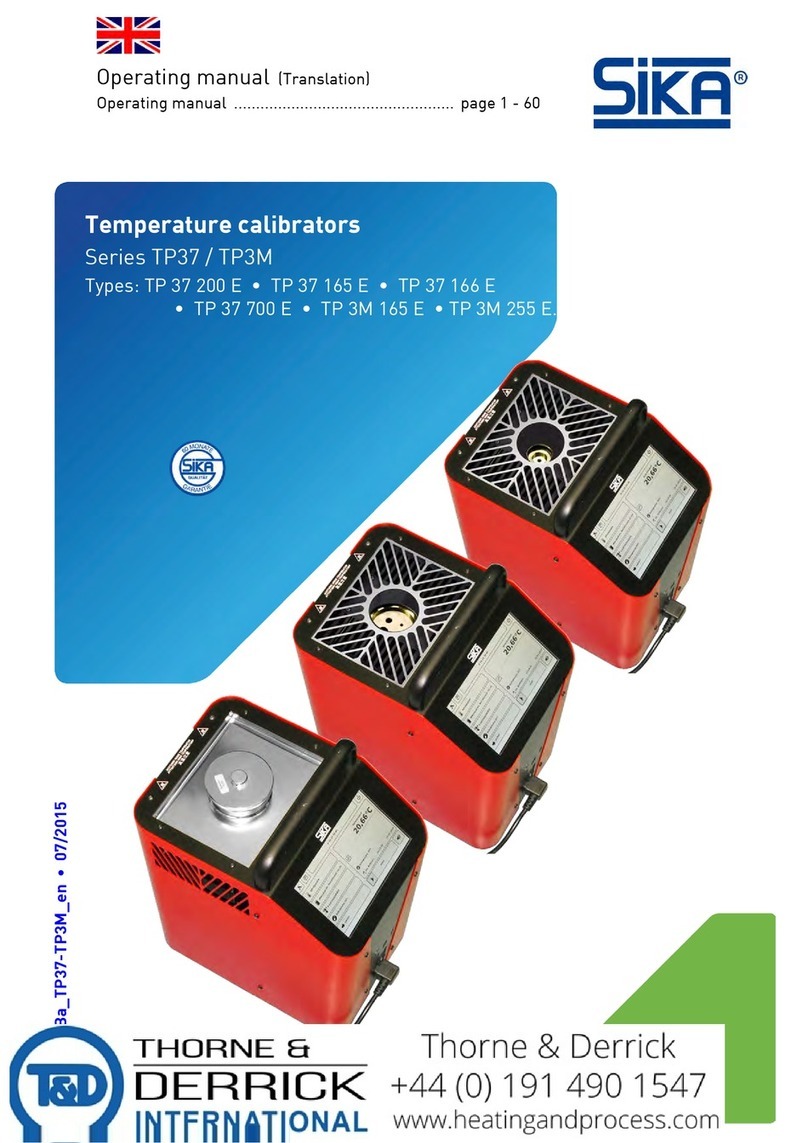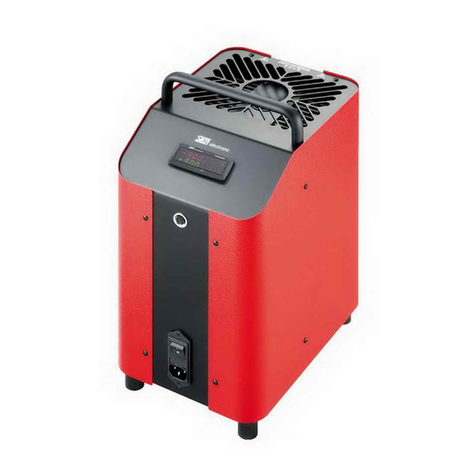
SIKA, Dr. Siebert & Kühn GmbH & Co. KG, Struthweg 7- , 34260 Kaufungen, Germany 4/40
Tel: +4
-5605-803-0, Fax: +4
-5605-803-54, email:
[email protected], web: www.SIKA.net
Contents
A.
General .......................................................................................................................................................5
A.1
Introduction .................................................................................................................................................5
A.2
Parts ...........................................................................................................................................................5
A.3
Safety .........................................................................................................................................................5
A.3.1
Compliance with safety standards...........................................................................................................5
A.3.2
Environmental conditions.......................................................................................................................6
A.3.3
Worn devices .......................................................................................................................................6
A.3.4
Device destruction procedure .................................................................................................................6
A.3.5
Instructions .........................................................................................................................................6
A.3.6
Making measurements ..........................................................................................................................7
A.3.7
Defects and abnormal stresses ...............................................................................................................7
A.3.8
Definitions ...........................................................................................................................................7
A.4
Maintenance.................................................................................................................................................8
B.
Using the instrument.....................................................................................................................................
B.1
Power-up .....................................................................................................................................................
B.1.1
The keyboard.......................................................................................................................................
B.1.2
The measuring and simulation terminals................................................................................................ 10
B.1.3
The USB connector ............................................................................................................................. 11
B.1.4
The screen......................................................................................................................................... 11
B.1.5
Getting started (after power-up) .......................................................................................................... 12
B.1.6
Operating modes ................................................................................................................................ 13
C.
Mode Programming ..................................................................................................................................... 14
C.1.1
Voltage or temperature measurement by thermocouple........................................................................... 14
C.1.2
Voltage or temperature emission by thermocouple.................................................................................. 15
D.
Related Functions ....................................................................................................................................... 20
D.1
Scaling ...................................................................................................................................................... 20
D.2
Nulling....................................................................................................................................................... 21
D.3
Calibrated sensors ...................................................................................................................................... 22
D.4
Configuration of predefined set points ........................................................................................................... 24
D.5
Storage of acquisitions in progress................................................................................................................ 25
D.5.1
Synthesiser configuration .................................................................................................................... 2
D.5.2
Configuration of the ramp generation.................................................................................................... 31
E.
Parameter settings...................................................................................................................................... 34
E.1
Contrast adjustment.................................................................................................................................... 34
E.2
Date and time setting.................................................................................................................................. 34
E.3
“Preferences” setting. .................................................................................................................................. 35
E.3.1
Filtering setting. ................................................................................................................................. 35
E.3.2
Display resolution setting. ................................................................................................................... 35
E.3.3
Lighting duration setting...................................................................................................................... 35
E.3.4
“Key beeping” setting.......................................................................................................................... 35
E.3.5
Language setting ................................................................................................................................ 36
E.3.6
Temperature unit setting ..................................................................................................................... 36
E.4
“Maintenance” menu ................................................................................................................................... 36
E.5
“About the instrument” menu ....................................................................................................................... 36
F.
Technical specifications................................................................................................................................ 37
F.1
Measurement Function................................................................................................................................. 37
F.1.1
Constant voltage (measurement) ......................................................................................................... 37
F.1.2
Temperature per thermocouple (measurement)...................................................................................... 38
F.2
Emission function........................................................................................................................................ 3
F.2.1
Constant voltage simulating................................................................................................................. 3
F.2.2
Temperature per thermocouple (simulating) .......................................................................................... 3
F.3
Power supply - Autonomy................................................................................................................................. 40












